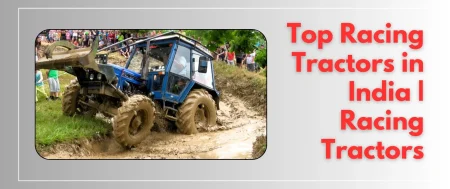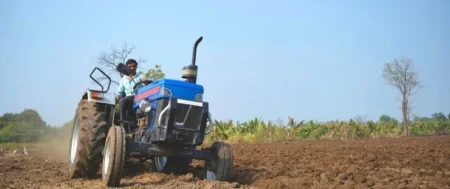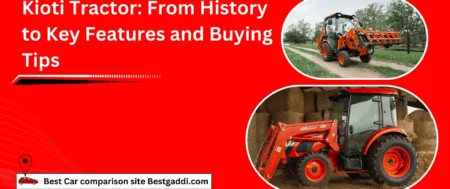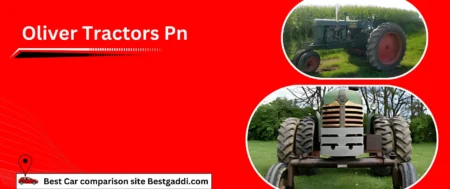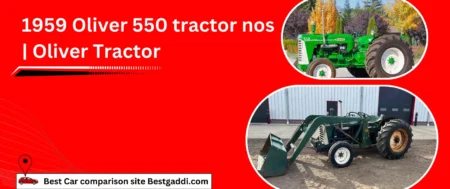Discover compact tractors, their specifications, and prices from top brands like John Deere and Kubota for your agricultural and landscaping needs.
What is a Compact Tractor?
Compact tractors are small yet powerful machines designed for a range of agricultural and landscaping tasks. These versatile machines are perfect for both professional farmers and hobbyists alike. Their compact size allows them to navigate tight spaces while providing robust power to tackle various jobs. Whether you’re mowing, tilling, or moving materials, a compact tractor can make your life significantly easier.
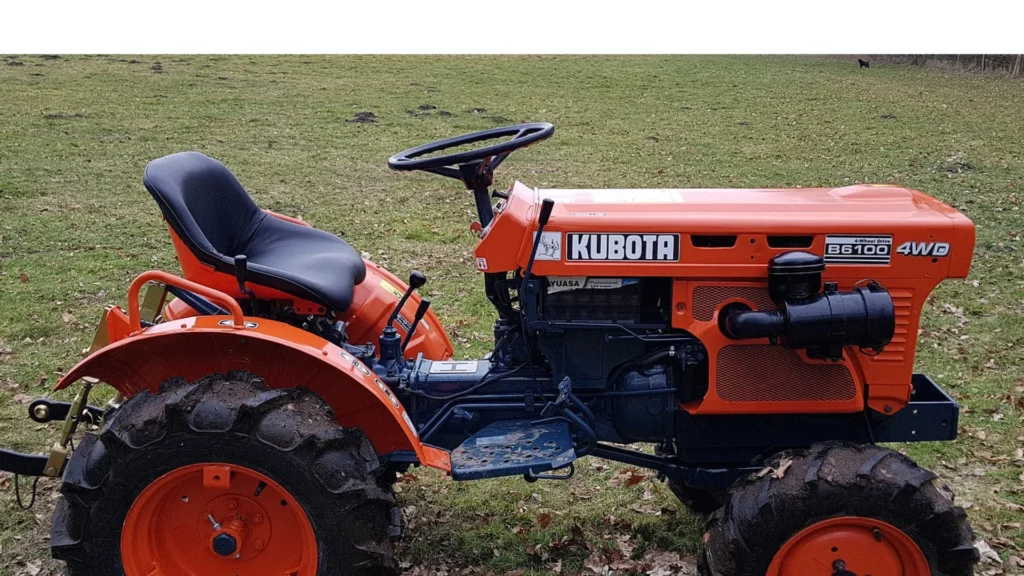
Table of Contents
Key Features of Compact Tractors
Versatility in Use
One of the standout features of compact tractors is their versatility. They can be equipped with a variety of attachments such as front-end loaders, backhoes, and mowers, making them suitable for a multitude of tasks. Whether you need to maintain your garden or manage a small farm, compact tractors can adapt to your needs effortlessly.
Size and Maneuverability
Their size is another significant advantage. Compact tractors typically weigh between 1,000 to 4,000 pounds and are much smaller than traditional tractors. This makes them highly manoeuvrable, allowing users to navigate through narrow paths and tight corners without hassle. Imagine tackling your garden or field without worrying about getting stuck or causing damage!
Popular Brands of Compact Tractors
There are several brands in the compact tractor market, each offering unique features, specifications, and price ranges. Let’s dive into some of the most popular brands and what they have to offer.
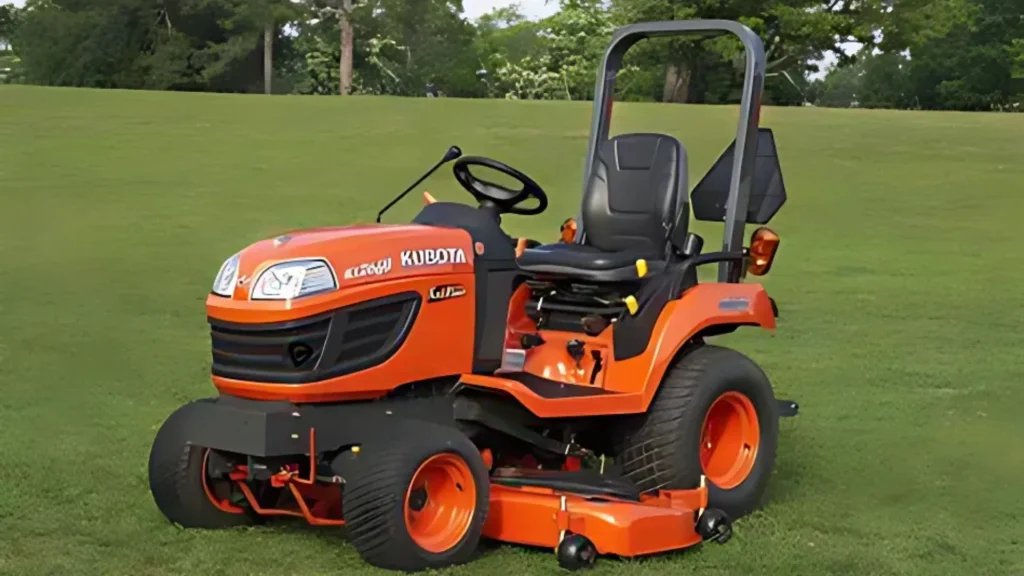
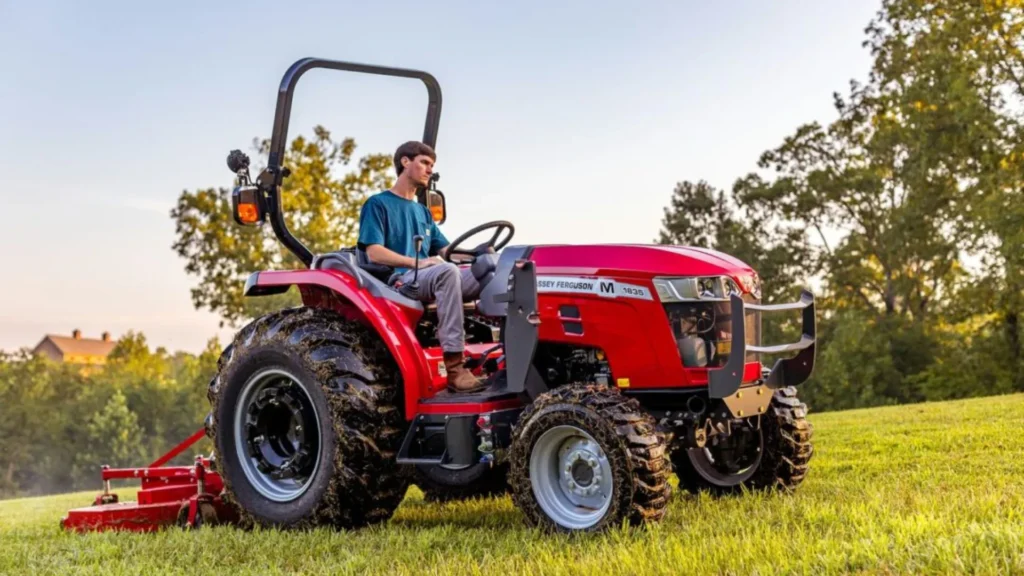
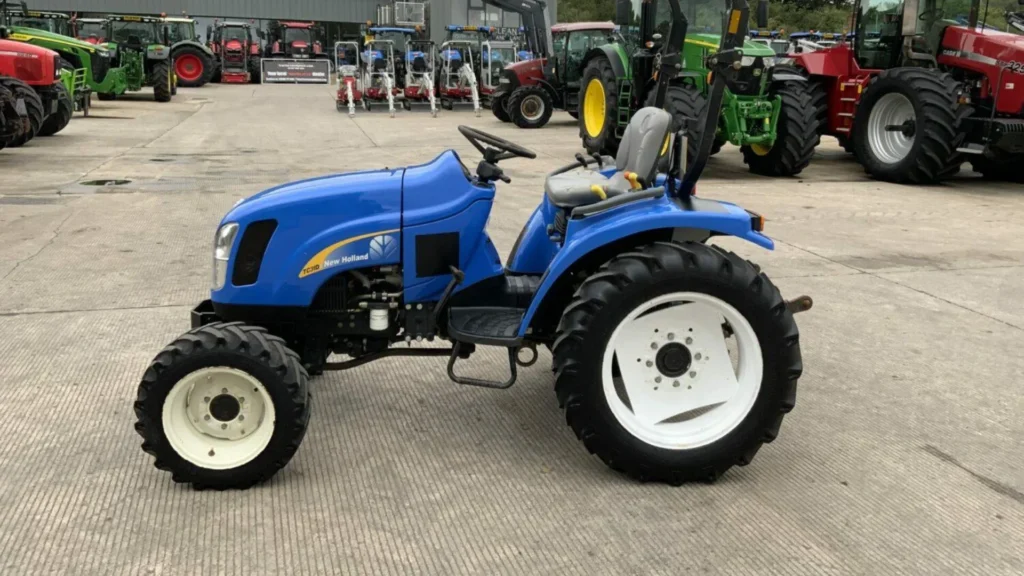
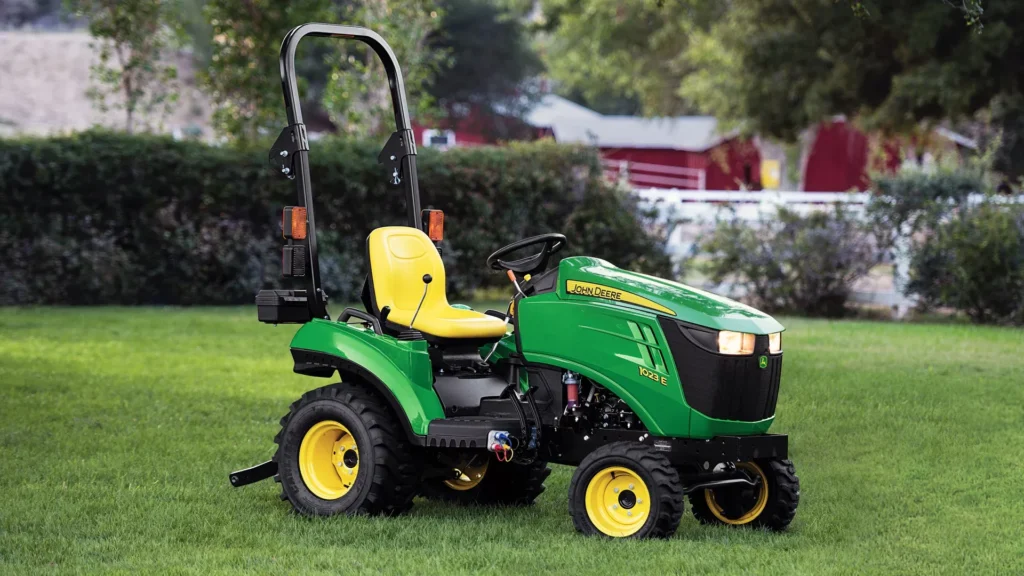
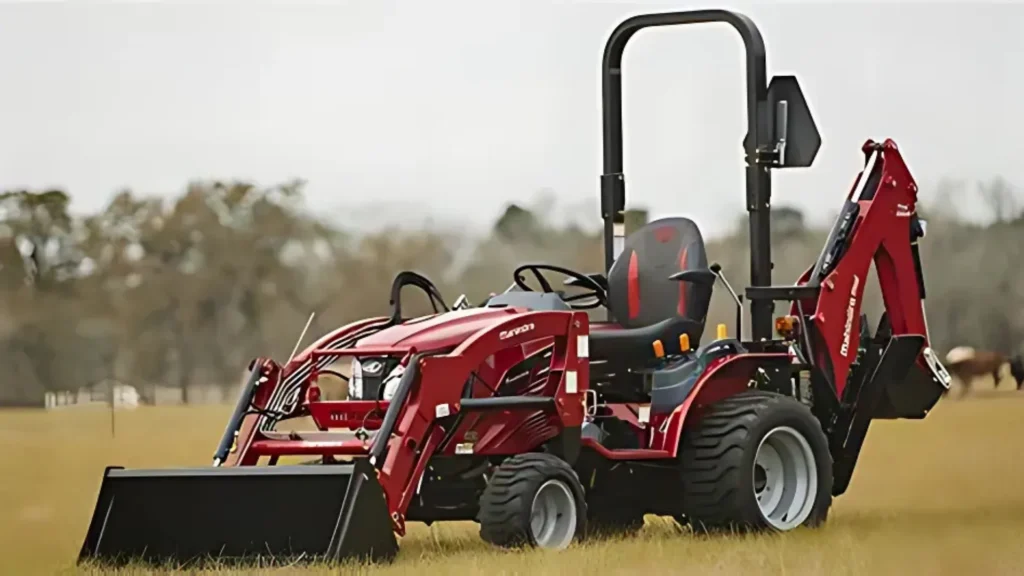
John Deere Compact Tractors
- Price Range: John Deere compact tractors range from around £9,000 to £30,000, depending on the model and features.
- Specifications:
- Engine Power: 23 to 50 horsepower
- Weight: 1,500 to 3,500 lbs
- Hydraulic Capacity: Up to 1,800 lbs
- Transmission: Hydrostatic or Gear Drive
- Official Link: Compact Tractors | 21.5-75 HP | John Deere US
Kubota Compact Tractors
- Price Range: Kubota tractors are renowned for their durability and performance, typically ranging from £8,500 to £25,000.
- Specifications:
- Engine Power: 21 to 50 horsepower
- Weight: 1,200 to 3,000 lbs
- Hydraulic Capacity: Up to 1,600 lbs
- Transmission: Hydrostatic or Manual
- Official Link: Compact Tractors Kubota L2 Series – Kubota (kubota-eu.com)
Massey Ferguson Compact Tractors
- Price Range: Massey Ferguson offers compact tractors ranging from approximately £7,500 to £28,000, catering to various budgets and needs.
- Specifications:
- Engine Power: 20 to 45 horsepower
- Weight: 1,500 to 3,200 lbs
- Hydraulic Capacity: Up to 1,800 lbs
- Transmission: Hydrostatic or Gear Drive
- Official Link: Compact (masseyferguson.com)
New Holland Compact Tractors
- Price Range: New Holland’s compact tractors are priced between £10,000 and £30,000, depending on the specific model and configuration.
- Specifications:
- Engine Power: 25 to 60 horsepower
- Weight: 1,600 to 3,800 lbs
- Hydraulic Capacity: Up to 2,200 lbs
- Transmission: Hydrostatic or Power Shuttle
- Official Link: WORKMASTER™ Compact 25/35/40 HP Tractors | New Holland
Mahindra Compact Tractors
- Price Range: Mahindra tractors are known for their affordability and reliability, with prices ranging from £8,000 to £25,000.
- Specifications:
- Engine Power: 22 to 50 horsepower
- Weight: 1,300 to 3,400 lbs
- Hydraulic Capacity: Up to 1,700 lbs
- Transmission: Synchro Shuttle or Hydrostatic
- Official Link: Tractor: Buy Farm Tractor in India – Mahindra Tractors
Compact Tractors Price List in 2025
Here’s a price comparison table for compact tractors from various popular brands, including their specifications:
| Brand | Price Range | Engine Power | Weight | Hydraulic Capacity | Transmission |
|---|---|---|---|---|---|
| John Deere | £9,000 – £30,000 | 23 to 50 horsepower | 1,500 to 3,500 lbs | Up to 1,800 lbs | Hydrostatic or Gear Drive |
| Kubota | £8,500 – £25,000 | 21 to 50 horsepower | 1,200 to 3,000 lbs | Up to 1,600 lbs | Hydrostatic or Manual |
| Massey Ferguson | £7,500 – £28,000 | 20 to 45 horsepower | 1,500 to 3,200 lbs | Up to 1,800 lbs | Hydrostatic or Gear Drive |
| New Holland | £10,000 – £30,000 | 25 to 60 horsepower | 1,600 to 3,800 lbs | Up to 2,200 lbs | Hydrostatic or Power Shuttle |
| Mahindra | £8,000 – £25,000 | 22 to 50 horsepower | 1,300 to 3,400 lbs | Up to 1,700 lbs | Synchro Shuttle or Hydrostatic |
This table provides a clear comparison of different compact tractor brands, their price ranges, and key specifications. If you need any adjustments or additional information, let me know!
Technical Specifications to Consider for Compact Tractors
When choosing a compact tractor, it’s essential to consider various technical specifications to ensure you select the right one for your needs.
Engine Power and Size
The engine power is a critical factor. Typically measured in horsepower, most compact tractors range between 20 and 60 horsepower. Depending on your tasks—be it mowing grass or hauling loads—selecting the right engine size is vital.
Transmission Types
Compact tractors often come with either hydrostatic or gear transmissions. Hydrostatic transmissions allow for smoother operation, while gear transmissions can offer more power in certain situations. Understanding the difference can help you make the right choice for your farming needs.
Hydraulic Systems
A powerful hydraulic system is necessary for operating attachments effectively. Look for tractors with robust hydraulic capacities that can handle the attachments you plan to use.
PTO Options
Power Take-Off (PTO) is crucial for running attachments like mowers and tillers. Compact tractors generally offer a standard or independent PTO system, which can impact the efficiency and ease of use with various implements.
Key Features of Compact Tractors
Compact tractors are designed with several key features that enhance their usability, efficiency, and versatility. Below are some of the most notable features that make compact tractors a valuable asset for various tasks:
1. Versatile Attachments
Compact tractors can be fitted with a wide range of attachments, allowing them to perform numerous tasks. Common attachments include:
- Front-End Loaders: For lifting and transporting materials like soil, gravel, and mulch.
- Backhoes: Ideal for digging and excavation tasks.
- Mowers: Perfect for maintaining lawns, gardens, and fields.
- Tillage Equipment: Used for soil preparation and cultivation.
- Snow Removal Tools: Such as snow blowers and blades, suitable for winter maintenance.
2. Compact Size and Maneuverability
The compact size of these tractors allows them to operate in confined spaces where larger tractors cannot fit. This feature is particularly beneficial for tasks in residential gardens, landscaping projects, and small farms. Their agility makes it easy to navigate narrow paths, tight corners, and uneven terrain.
3. Engine Power and Efficiency
Compact tractors typically come with engine power ranging from 20 to 60 horsepower, striking a balance between power and efficiency. This range allows them to handle various tasks effectively while maintaining fuel efficiency, making them a cost-effective solution for many users.
4. Transmission Options
Most compact tractors offer different transmission types to suit varying user preferences and tasks:
- Hydrostatic Transmission: Provides smooth and seamless control, allowing for easy operation with just a pedal. Ideal for tasks requiring frequent direction changes.
- Gear Transmission: Offers more power and control for heavy-duty tasks, appealing to those who require a robust solution for tough jobs.
5. Hydraulic Systems
A strong hydraulic system is essential for the efficient operation of attachments. Many compact tractors feature hydraulic capacities that allow for the seamless operation of implements, enhancing their overall functionality. Look for tractors with high hydraulic flow rates for optimal performance with attachments.
6. Power Take-Off (PTO) Systems
Compact tractors usually come equipped with PTO systems, which are crucial for powering various attachments such as mowers, tillers, and sprayers. Options may include:
- Standard PTO: Provides sufficient power for most attachments.
- Independent PTO: Allows for operation of attachments independently of the tractor’s speed, offering greater flexibility.
7. Comfort and Ergonomics
User comfort is a key consideration in compact tractor design. Many models feature:
- Adjustable Seats: For enhanced comfort during long hours of operation.
- Easy-to-Reach Controls: Designed for intuitive operation, ensuring that users can manage attachments and settings without hassle.
- Cab Options: Some compact tractors offer enclosed cabs with climate control, protecting operators from the elements while providing a comfortable working environment.
8. Safety Features
Safety is paramount in any farming or landscaping task. Compact tractors are often equipped with:
- Rollover Protection Structures (ROPS): To protect the operator in case of a rollover.
- Seat Belts: Ensuring that the operator remains securely seated during operation.
- Emergency Shut-off Switches: Providing an immediate way to halt operations in case of emergencies.
9. Fuel Efficiency
Compact tractors are designed with fuel efficiency in mind. Many models are engineered to use less fuel while still delivering the power needed for demanding tasks. This feature not only reduces operating costs but also minimizes environmental impact.
10. Customization Options
Many brands offer customization options, allowing users to select features and attachments that best suit their specific needs. This flexibility ensures that each user can tailor their compact tractor to meet their unique requirements.
These features collectively make compact tractors a popular choice among both professional landscapers and homeowners looking for efficient and versatile machinery. If you need more specific details or additional features, feel free to ask!
How to Buy a Compact Tractor
Purchasing a compact tractor is a significant investment, so it’s essential to make an informed decision. Here’s a step-by-step guide to help you through the buying process:
1. Determine Your Needs
- Assess Your Tasks: Identify the primary tasks you will perform with the tractor, such as mowing, tilling, or hauling.
- Evaluate Your Space: Consider the size of your property and the spaces where the tractor will operate. Compact tractors are designed for tight spaces, but you still need to ensure the model fits your specific requirements.
2. Set a Budget
- Establish a Price Range: Determine how much you are willing to spend. Compact tractors can range from £7,500 to £30,000 or more, depending on the model and features.
- Consider Additional Costs: Factor in additional expenses such as attachments, insurance, maintenance, and potential financing.
3. Research Brands and Models
- Explore Different Brands: Research popular brands like John Deere, Kubota, Massey Ferguson, New Holland, and Mahindra. Look for reviews, ratings, and specifications.
- Compare Models: Within each brand, compare models based on your needs. Look for key specifications such as engine power, weight, hydraulic capacity, and transmission options.
4. Visit Dealerships
- Local Dealerships: Visit local dealerships to see the tractors in person. This allows you to get a feel for the size, comfort, and features.
- Ask Questions: Don’t hesitate to ask the dealer about the specifications, warranty options, and available attachments. Inquire about test-driving the tractor.
5. Consider Used Tractors
- Evaluate the Market: If you’re on a tight budget, consider purchasing a used compact tractor. Look for certified pre-owned models or those with a good maintenance history.
- Inspect Carefully: If buying used, inspect the tractor thoroughly for any signs of wear or damage. Check the engine, tires, and hydraulic systems.
6. Financing Options
- Explore Financing Plans: Many dealerships offer financing options. Compare interest rates and terms to find the best deal.
- Consider Loans: If financing through a dealership isn’t suitable, explore bank loans or credit unions for competitive rates.
7. Finalize Your Purchase
- Negotiate the Price: Don’t hesitate to negotiate the price with the dealer. Be prepared to walk away if the deal doesn’t meet your budget.
- Review the Paperwork: Before signing any contracts, carefully review the terms, warranty information, and service agreements.
- Arrange Delivery or Pickup: Once the purchase is finalized, arrange for the delivery of your compact tractor or plan for its pickup.
8. Maintenance and Care
- Follow Maintenance Guidelines: After purchasing, adhere to the manufacturer’s maintenance guidelines to keep your tractor in optimal condition.
- Invest in Attachments: Consider purchasing attachments that enhance the tractor’s capabilities and increase its versatility for various tasks.
By following these steps, you can make a well-informed decision when buying a compact tractor that suits your needs and budget. If you have any more questions or need further assistance, feel free to ask!
Conclusion
In conclusion, compact tractors are incredibly versatile machines that can make a significant difference in your agricultural or landscaping tasks. With a range of brands and specifications available, there’s something to suit every need and budget. When choosing a compact tractor, consider your specific requirements and how different specifications can affect performance. This way, you’ll find the perfect fit for your tasks, making your work more manageable and efficient.
FAQs
What is the average price of a compact tractor?
Compact tractors typically range from £7,500 to £30,000, depending on the brand and specifications.
Can compact tractors be used for landscaping?
Absolutely! Compact tractors are ideal for landscaping tasks, offering various attachments that can help with mowing, grading, and more.
What is the horsepower range for compact tractors?
Compact tractors generally range from 20 to 60 horsepower, catering to different tasks and needs.
Are compact tractors easy to operate?
Yes, compact tractors are designed to be user-friendly, often featuring hydrostatic transmissions that make them easier to operate.
How do I choose the right compact tractor for my needs?
Consider your specific tasks, budget, and required specifications such as engine power, hydraulic capacity, and transmission type to make an informed decision.
What attachments can I use with a compact tractor?
Compact tractors can be equipped with various attachments, including front-end loaders, backhoes, mowers, tillers, and plows, making them versatile for different tasks.
How do I maintain a compact tractor?
Regular maintenance includes checking the oil and fluid levels, inspecting the tires, cleaning or replacing filters, and ensuring the hydraulic system is functioning properly. Always refer to the owner’s manual for specific maintenance guidelines.
Can I finance a compact tractor?
Yes, many dealerships offer financing options for compact tractors. It’s advisable to compare interest rates and terms to find a financing plan that suits your budget.
Are compact tractors suitable for commercial use?
Absolutely! Compact tractors are often used in commercial settings for landscaping, snow removal, and small-scale farming due to their versatility and efficiency.
What is the warranty period for compact tractors?
Warranty periods vary by brand and model but typically range from one to five years. It’s important to review the warranty terms offered by the manufacturer or dealer when purchasing.
